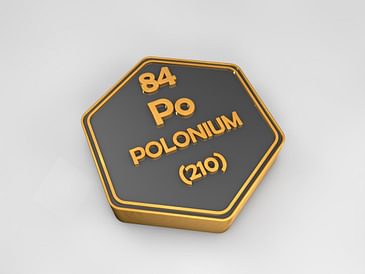Welcome to the My Nuclear Life podcast! In this episode, host Shelly Lesher interviews Pete Burgess, an expert in all things radioactive. Pete holds a master’s degree in radiobiology from London University, has spent the last 45 years in the radiation field, and has worked for various governmental agencies and industry leaders. He has filled roles around the design, evaluation, manufacture, calibration, and use of radiation monitoring equipment, and has been involved in everything from decommissioning buildings to reviewing the waste assessment process associated with the cleaning of the Chernobyl site. Today, Pete joins Shelly to share about a specific topic: the story of Alexander Litvinenko!
Alexander Litvinenko was a Russian spy who defected to the UK and who, in 2006, was poisoned with polonium-210. Litvinenko again made headlines in September 2021 when the European Court of Human Rights ruled that Russia was responsible for the murder. His story is remarkable for several reasons. For one thing, Litvinenko’s life in the UK was far from covert. Unlike many other defectors from ruthless regimes who went underground, Litvinenko not only retained a public presence, but took vocal strides against the Russian government and its leader, Vladimir Putin. And in an event that Pete was later tasked with researching, Litvinenko was killed in a remarkable fashion; his poisoning took weeks to diagnose, and inflicted on him a uniquely awful manner of death.
Getting into more detail about the poisoning itself, Pete explains how, on November 1, 2006, Litvinenko met with a couple of Russian acquaintances at London’s Millennium Hotel, unknowingly drinking tea that they had laced with poison brought to the US from Russia. The poison, polonium-210 was a highly toxic radioactive material. Litvinenko infected some other areas, such as his home and the sushi restaurant he later visited, with mild amounts of radiation, even as the poison began to make its way through his system. Litvinenko rapidly deteriorated as the poison worked through his soft tissue, destroying his liver and kidneys and causing his body to fill with waste material. After thallium was suggested and ruled out as the cause of the illness, those caring for Litvinenko eventually found out what poisoned him. Unfortunately, it would have been too late to help him even a mere hour or so after he ingested the polonium-210, and he died about three weeks after the attack.
It was fairly easy for authorities to retrace Litvinenko’s steps and determine where and by whom he was poisoned. And while polonium-210 wasn’t a commonly used poison, it made sense as the option used in this instance. It has characteristics that make it ideal for travel, has a short half life that means it packs a lot of radioactivity within a small mass, and offered a way to make a strong statement with the assassination. The dose given to Litvinenko was produced by a reactor, but this isn’t the only way to produce enough to kill, and the substance is widely available in small amounts. Pete explains how polonium-210 spreads and can be tested for, and details how authorities traced the (limited) spread of radiation from Litvinvenko’s poisoning. He shares about how public fear was low because of the perception of the murder as a mafia-style hit, the unlikelihood of polonium-210 being used in a terrorist attack, the value of allaying rather than exacerbating fear, and much more!
Links:
Visit the My Nuclear Life website for information, to send an email, and to enter the anniversary drawing!
My Nuclear Life now has a Patreon page, where you can subscribe for bonus content!
Please leave a 5-star rating and a review, and don’t forget to subscribe to My Nuclear Life wherever you listen to podcasts and share the show with friends!
Production costs for this episode were provided through National Science Foundation Grant PHY-2011267.





